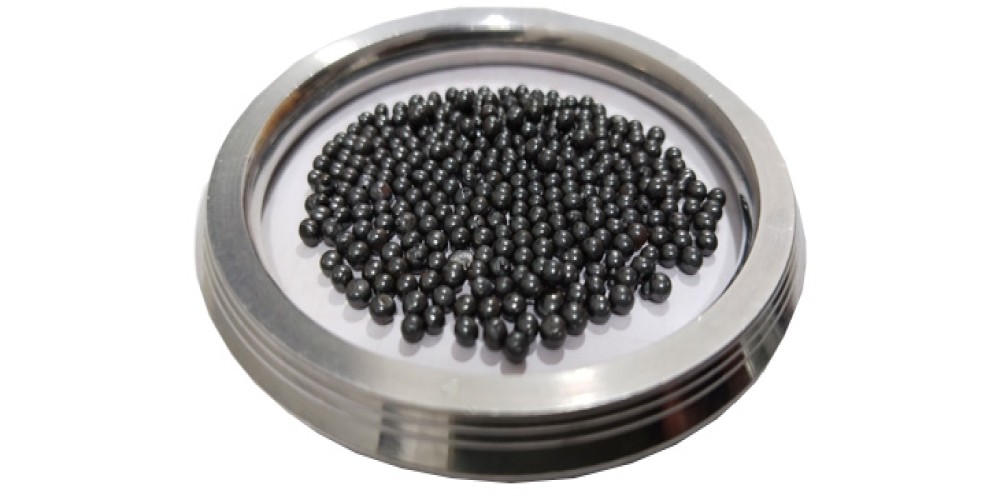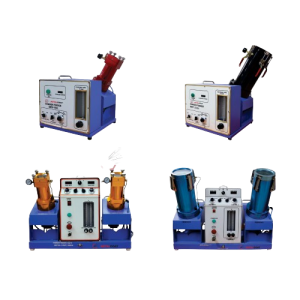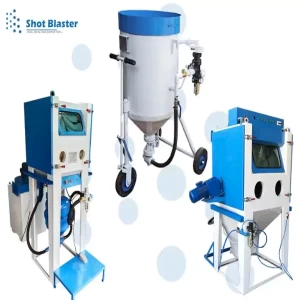Q. What is steel shot used for?
Search

Steel Shot and its Uses

Steel Shot Abrasive
Steel shot is an abrasive media used in various industries for applications such as cleaning, peening, and surface preparation. It is made from steel cut into small spherical particles, which are then heat-treated to increase their hardness and durability. Steel shot is available in a range of sizes, typically from S70 (0.007 inches or 0.18mm) to S780 (0.078 inches or 2.0mm), depending on the application. It is often used in abrasive blasting machine operation, also known as sand blasting machine operation, to remove rust, paint, and other coatings from metal surfaces. It is also used in shot peening to improve the fatigue strength and resistance to stress corrosion cracking of metal components.
One of the advantages of steel shot is its high hardness, typically measuring 40 to 65 on the Rockwell C hardness scale. This allows it to effectively remove tough coatings and prepare surfaces for further treatment. Steel shot is also very durable and can be reused many times before needing to be replaced, which makes it cost-effective for large-scale blasting and shot peening machine operations.
When using steel shot for abrasive blasting or shot peening, it is important to take appropriate safety precautions, such as wearing protective gear and ensuring proper ventilation to avoid the buildup of dust and fumes. Overall, steel shot is a versatile and reliable abrasive media that can be used in a variety of applications to achieve a high-quality surface finish and improve the performance and longevity of metal components.
For more info about Babbit Wire Visits our Website.
Steel Shot Uses
Steel shot is a versatile abrasive media that has various uses in many industries. Here are some common uses of steel shot:
- Abrasive blasting: Steel shot is used in abrasive blasting machine to remove rust, paint, and other coatings from metal surfaces. This is a common application in industries such as manufacturing, construction, and automotive.
- Shot peening: Steel shot is used in shot peening to improve the fatigue strength and resistance to stress corrosion cracking of metal components. This process involves impacting the surface of the metal component with steel shot to create compressive stresses, which helps to increase its durability and longevity.
- Surface preparation: Steel shot is used for surface preparation of metal components prior to painting, coating, or bonding. This process involves blasting the surface with steel shot to create a clean, rough surface that improves the adhesion of coatings or adhesives.
- Cleaning and deburring: Steel shot can be used to clean and deburr metal components, removing sharp edges and burrs that can cause injury or interfere with functionality.
- Shot blasting: Steel shot is used in shot blasting machine to clean, polish, or strengthen metal components. This process involves blasting the surface of the metal component with steel shot to achieve a desired surface finish or surface property.
For More info about Flame Spray Gun Visit our website.
Overall, steel shot is a versatile and widely used abrasive media that can be used in a variety of applications to achieve a high-quality surface finish and improve the performance and longevity of metal components.
Ans.
Steel shot is a form of ballistic substance that is used as a projectile in shotguns and pellet guns, as well as for abrasive blast cleaning and shot peening.
Q. What are the properties of steel shot?
Ans.
Hardness, shape, size, toughness, wear resistance, and low cost are all requirements for carbon steel shot. This article describes some of the elements that allow the required qualities to be realised. When exposed to air, the iron in carbon steel oxidises. Iron oxide is formed when iron and oxygen combine.
Q. How is steel shot manufactured?
Ans.
Water jet and centrifugation are combined in rotational centrifugation. Place the molten steel in specialized equipment and rotate it through a metal membrane. The metal will form small droplets and descend vertically into the water as a result of the centrifugal force and surface tension, eventually forming steel shots.
All Blogs

